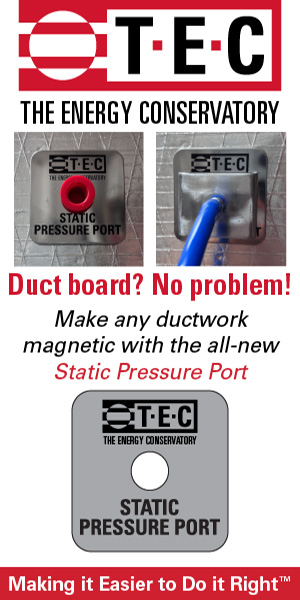The Government, Utilities, and More

Robin LeBaron: I find it very interesting to speak of certifications regarding the high-performance approach. Why? Because its path leads toward energy savings. Energy savings is a sticky wicket.
We’ve spent a lot of time not playing in the energy savings public policy space. Instead, we focused on developing a market-based model because we think that’s the right basis on which to build.
However, what has been happening at the federal level over the last year has made us revisit our market-only approach. The government is focusing tremendous resources on energy savings. That is happening on two dimensions: how to reduce overall energy consumption and reduce consumption at times of peak load, which is what utilities care about.
This government focus creates further opportunities for NCI and Pearl to collaborate because the public policy space needs to be more aware of the impact and benefits of high-performance HVAC contracting.

Chad McAllister: As far as the high-performance contractor is concerned, I think it will have to be the standard. Twenty years ago, when I got into this business, contractors used the beer-can-cold rule for installations. Back then, we could pit six 10-SEER condensing units in the back of a pickup truck, slam them into six houses, and feel like we had good installations if the air coming out of the registers was beer can cold.
Now through legislation calling for 13 SEER minimums, high-efficiency products have become more complicated. I am talking about the use of inverter drives, variable refrigerant flow technologies, etc. Today, we are looking at the new SEER Two standards and A2L refrigerants. The margin for error is so slim that contractors who aren’t using best practices will be left on the sideline.
And I’m talking about best practices like those taught by NCI – testing, measuring, and diagnosing issues using data. I feel that if contractors don’t train in these things, there will come a point when they cannot keep up and stay in business.

Robin LeBaron: Another huge factor in all of this is the move toward all electrification. That accentuates everything Chad just said. It adds to the complexities of HVAC contracting. As I talk to state officials about such policies, I still hear a lot of interest in consumer rebates. This approach is the age-old method for helping customers afford higher-efficiency products. But it doesn’t necessarily work and so programs come and go.
In my opinion, the testing-in and testing-out approach of high performance should be an important part of public energy savings initiatives.

Colleen Keyworth: Generally, homeowners don’t care unless it affects their pocketbooks. Utilities would have to provide several rebates or savings each month to get real consumer attention. Otherwise, consumers will always default to price.
Pricing, Pricing, Not Pricing

Ben Middleton: I think the big message we should get out to the contracting community is that it’s NOT pricing; it’s affordability. We can talk about affordable quality with financing instead of being worried about sticker shock.
This industry has been so resistant to financing. If you look at every other industry — automobile, furniture, roofing, and window industries, for example — each embraces financing wholeheartedly. For whatever reason, the HVAC industry has a hard time with the idea of talking about payments versus the big ticket.
What it comes down to is comparing actual performance to equipment design. Homeowners won’t get promised efficiencies or Btu capacities if contractors don’t install everything correctly. When that happens, the customer will be unhappy.
Click Below for the Next Page



![High Performance Contracting: Summit 2018 Panel Discussion on Implementation [PART 1]](https://hvactoday.com/wp-content/uploads/2018/06/DSC_0613-Panel-Discussion-4c3-440x264.jpg)









Recent Comments